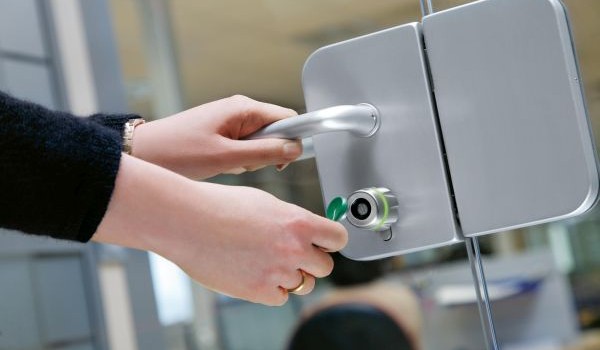

How to Pick a Lock
Key Copy December 13, 2015 Editorial Staff 0

If you find yourself locked out of your house because you’ve forgotten your key inside or elsewhere, there may be a way for you to get in without having to call a locksmith or breaking down the door. Unless you’ve already installed an electronic lock, you can with patience and two pieces of wire pick your way in. Most locks around the home or office today are still of the simple pin-and-tumbler variety that was invented way back in 1776. Locks of this type can be relatively easy to open using a pick and a wrench set which can be fashioned out of common household items like paper clips and hairpins.
Basically, a pin-and-tumbler lock consists of a cylinder that rotates within its housing. When locked, pairs of pins work to keep the cylinder from turning. For each pair of pins, the ones at the top protrude into holes in both the cylinder and the housing. A system of springs keep the pins in place. When a key is inserted into the lock’s plug, it pushes the pairs of pins up so that the top pins no longer enter the cylinder and housing, making it possible to turn and open the lock. The pins have different lengths corresponding to the sizes of the grooves in the correct key. To pick a lock then, what you need to do is to get the pins to line up in a certain way using certain tools, instead of the proper key, to get the cylinder to turn, thus clicking the lock open.
Now what tools to use in place of the correct key? There are a number of professional-grade picking tools that are already commercially available for those who are into the competitive recreational legitimate pastime known as “locksport,” as well as of course for the career burglars. The best ones are crafted from titanium or titanium alloy. Typically, a set of these tools comes with a tension wrench along with a number of rakes with varying numbers of ridges for general and specialized lock picking jobs. Basically, a professional lock picker has access to different tools for different lock designs. But what of the non-professional? He can improvise using two strong pieces of wire. Large steel paperclips or hairpins may do for your initial try. Bend one of the wire into an ‘L’ shape to make your tension wrench. Bend the other piece of wire slightly at the tip to serve as the pick.
To pick a lock, insert your improvised tension wrench into the bottom of the keyhole and apply a slight pressure in the direction the plug would turn if you had used the correct key. While maintaining that sleight pressure, use the other piece of wire with your other hand to scrub or rake at the pins. Move the pick back and forth until you can feel the pins setting. Do not stop applying the sleight pressure with the tension wrench and the raking motion with the improvised pick until you feel the cylinder turning and the lock clicking open. Remember that picking locks is more of an art than an exact science. It requires skills that can only be acquired through constant practice. If you want to be proficient at it, practice using different kinds of locks.

No comments so far.
Be first to leave comment below.